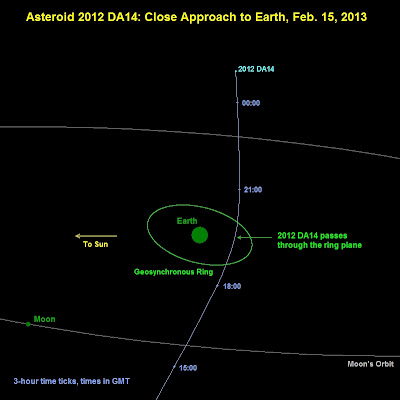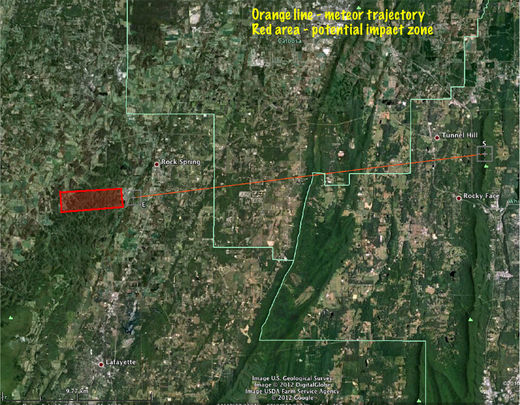
© NASA
An amateur team spotted the unusual asteroid, named 2012 DA14, on February 22.
Its small size and orbit meant that it was observed only after it had flown past Earth at about seven times the distance of the Moon.
However, current predictions indicate that on its next flyby, due on 15 February 2013, it will pass Earth at just 24 000 km - closer than many commercial satellites.
"This is a safe distance, but it is still close enough to make the asteroid visible in normal binoculars," said Detlef Koschny, responsible for near-earth objects in ESA's Space Situational Awareness (SSA) office.
The asteroid was discovered by the La Sagra Sky Survey observatory, in the southeast of Spain, near Granada, at an altitude of 1700 m, one of the darkest, least light-polluted locations on the European mainland.
"Considering its path in the morning sky, its rather fast angular motion, the quite faint and fading brightness and its orbit high above the plane of Earth's orbit, it was a slippery target - and easily could have escaped undetected during this Earth visit," said Jaime Nomen, one of the discoverers.



Comment: So, maybe larger amounts of debris are entering this 'area of space', rather than the other way around?
There has indeed been an incredible number of fireballs lately, of which the three over eastern Norway are just a few...
9 March, Fireball Spotted Over North Georgia
4 March: Meteor Shower Dazzles Victorians Lucky Enough to See It
4 March: Thousands Witness Spectacular Fireball Streak Over UK
2 March: Fireball seen from southern Norway and Sweden
2 March: Green Fireball Seen All Over Southeastern Canada
1 March: Green Object Reported in the Sky Over Newfoundland
29 February: What Was The Bright Flash In The Sky Tuesday Night?
22 February: "Huge fireball" streaks through Edmonton sky
22 February: Meteor Rain in China
14 February: Exploding UFO Wakes Thousands in South Carolina
12 February: Exploding Fireball recorded over Okayama, Japan
5 February: Fireball with huge tail seen over Western Australia
5 February: Fireball Photographed Over Corfu, Greece
4 February: East coast of US lights up as another enormous fireball streaks through sky
2 February: Huge Fireball Over Tokyo, 2 February 2012
1 February: Wednesday night's Texas meteor so bright it was seen in Kansas
1 February: Halifax 'fireball' probably a meteor